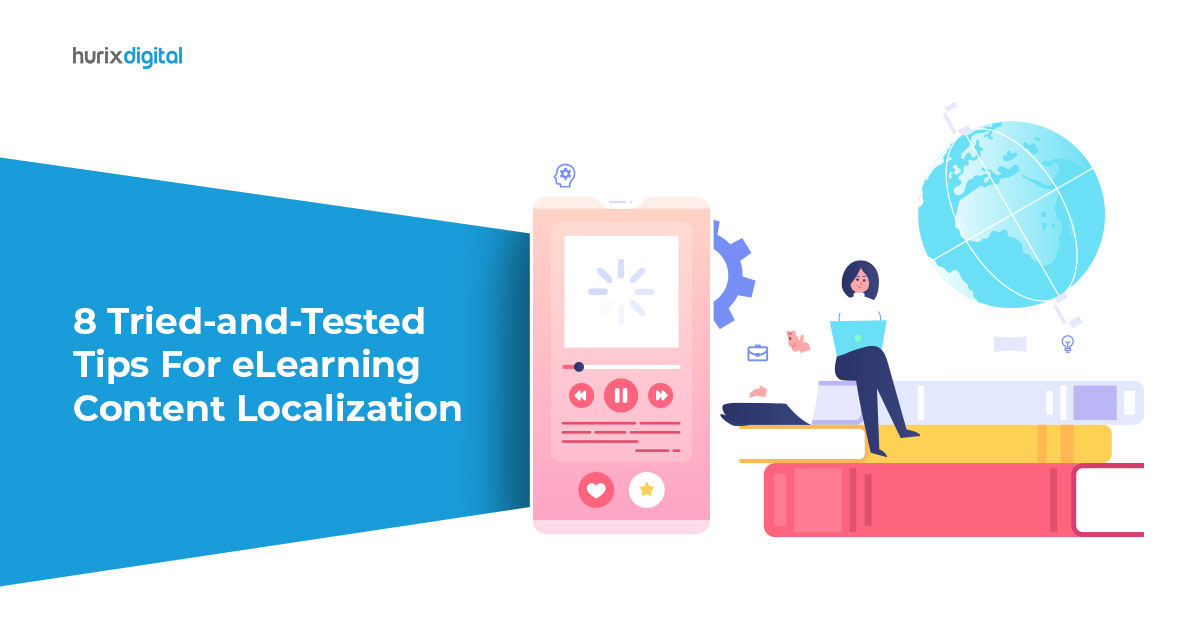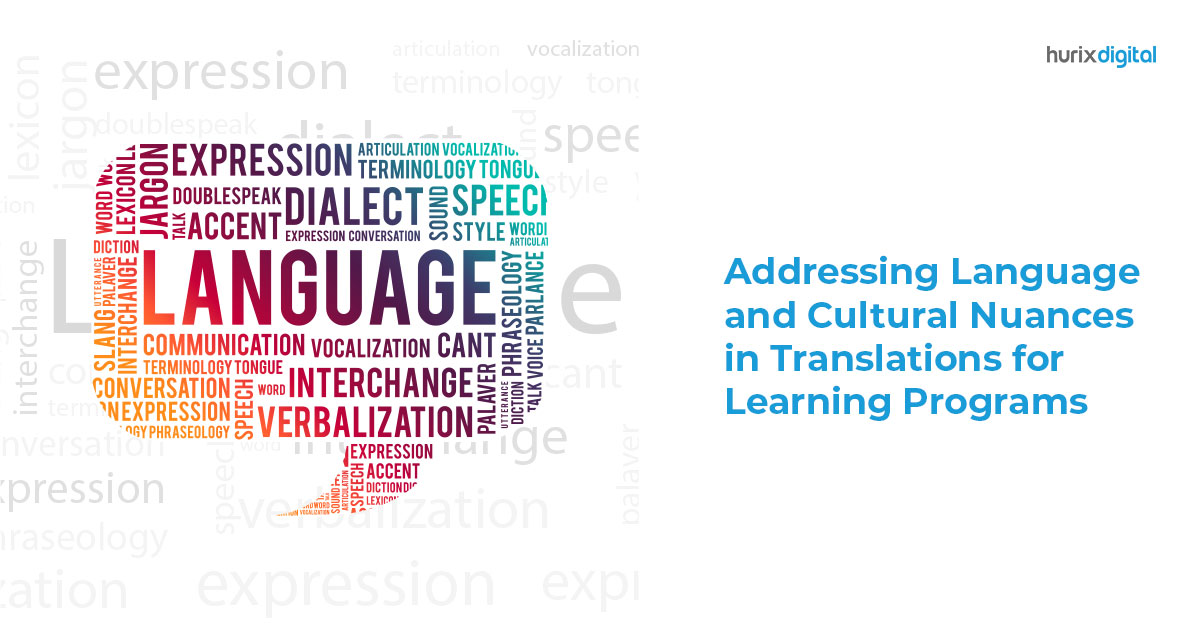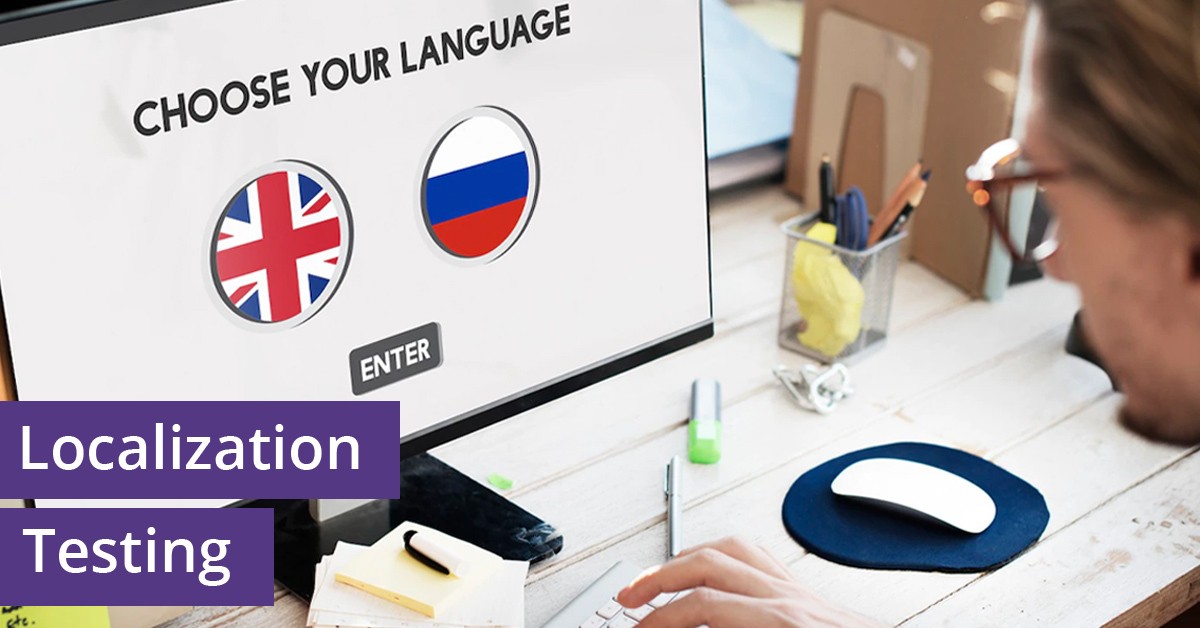
8 Tried-and-Tested Tips For eLearning Content Localization
Summary
This article offers tried-and-tested tips for eLearning content localization. It covers best practices and tips to create effective and engaging eLearning experiences for a global audience.
Many scholars believe that the first piece of content to be translated was the poem, ‘The Epic of Gilgamesh,’ written in Sumerian and translated into various Asian languages. It has been over 2000 years since we tapped into the power of translating one language into another to increase the content’s reach and impact.
Today, we’ve come a long way and gone beyond translation. We have begun localizing content, with the benefits broadly remaining the same. But how is localization different from translation? How can you maximize these benefits through eLearning content localization services? Here goes.
Table of Contents:
- What is eLearning Content Localization?
- 8 Tips to Fortify Your Content Localization Services
- Towards an eLearning Kaleidoscope
What is eLearning Content Localization?
When you use eLearning content localization services, you do more than translate a language. Localization involves adapting the primary content in the preferred language(s) with cultural context, formatting guidelines, local norms, regulatory requirements, etc., after understanding the target audience in-depth.
You can localize different types of eLearning content, like:
- Videos
- Presentations
- Graphs and infographics
- Graphics and images
- Audio
- FAQs
- Course reviews and testimonials
- Case studies, etc.
Apart from the content, the use of colors, phrases, slang, language direction, units of measurement, spellings, accents, music, etc., are also localized.
Also Read: How to Select the Right eLearning Authoring Tools and Services
8 Tips to Fortify Your Content Localization Services
You can differentiate your content localization strategy by following these eight localization best practices and getting an edge over others.
1. Start with One
It’s great to have localization plans in multiple languages, but if you are doing it for the first time, start with only one language. Use that as a prototype. Assume you are going to make mistakes. You can learn from this prototype and use the insights from that to optimize your plans. It will also increase productivity.
2. Understand the Dialect
Each language has multiple dialects. Putting in some research to find out what dialect your target audience is familiar with can go a long way in getting accurate eLearning localization done. The Spanish spoken in Spain is different from the one in Mexico, for example. Using a dialect that is not relevant can lead to confusion and errors.
3. Focus on the Other Parts of Language Localization
Along with the dialect, you need to adapt your eLearning modules for the contract and expansion of the language while translating. Depending on the tongue, you may need more or less space on a page. Hindi may take more space than English — Japanese may take less. Also, create a layout that considers the language direction.
4. Give Priority to The Metrics
Metrics are where you can get tangible insights to make informed decisions. But before that, you need to set some metrics. What is the goal of your content localization strategy? Set your KPIs. Then to get powerful insights, track them consistently. They’ll outline the scope of improvement. Then apply the learnings.
5. Don’t Offend!
Cultural context is the keyword for eLearning content localization. Some gestures, slang, colors, etc., can be offensive to people from one country but the norm for people from another. Having cross-cultural awareness can help you avoid such issues. Do your research or hire a local expert who can help you steer. Offending a group of people is the last thing you’d want — not to mention the legal consequences that sometimes follow.
6. Simplicity and Original Meaning
One of the critical challenges that localization faces is the meaning of “getting lost in translation.” Ensure the original meaning is never lost. Don’t go for literal translations that change the meaning (what happens when you use online translation tools, for example).
Another essential thing to remember is to maintain simplicity in all illustrations, images, phrases — or anything else that you are changing while localizing. Choose simple sentences too, so they are quick to understand.
7. Test and Update
Before you launch the localized eLearning course, test it among a small batch of people. Look at it as beta testing. Fix the flaws before you make it available in the broad market. Also, for an eLearning module to do well, you must ensure it is relevant to the current times.
Without constant updates, your content can lose relevance. It takes a lot of resources to update constantly, but plan for this budget in advance and make that effort. Or hire an expert offering eLearning localization solutions. More on the “why” in the next point.
8. Partner with Localization Experts
Experts in the field best carry out eLearning content localization services. They have experience in translation and localization services and the right skills and tools. Imagine what high-quality linguists, proofreaders, video editors, multimedia and instructional designers, localization engineers, etc., can bring to the table.
Localization services companies can save time and resources efficiently. Look at Hurix, for example, where you can get multi-language localization support with cutting-edge learning solutions.
Also Read: Measuring the Impact of Localization on Corporate Training Effectiveness
Towards an eLearning Kaleidoscope
The Global Language Learning market, valued at USD 40.22 billion in 2021, is expected to grow at a CAGR of 10.6% between 2023-2028. This shows how important it is for you to get in on the eLearning localization game as soon as possible.
The best way to go about this is to engage the services of an eLearning content localization services provider like Hurix Digital. Get the best content localization services; we offer scenario-based, gamified, and micro-learning experiences. Our experts can research to understand the target audience well and provide a fully-customizable eLearning localization service too.

A highly enthusiastic and motivated sales professional with over twenty five years of experience in solution selling of training-related applications and services. Maintains an assertive and dynamic style that generates results. Ability to establish long-term relationships with clients built on trust, quality of service and strategic vision. Specializes in financial services, higher ed, publishing and government in the areas of learning and development.






